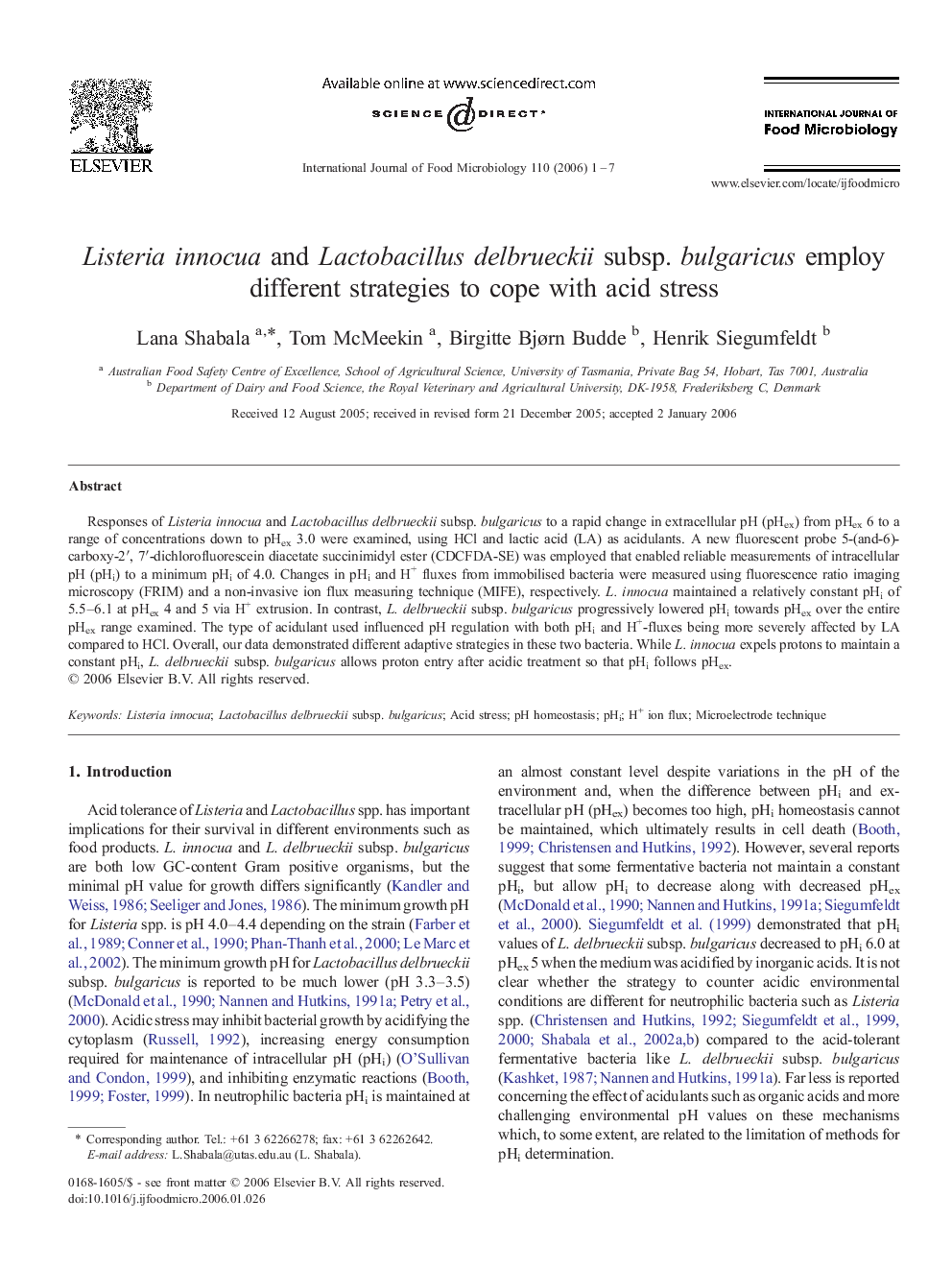| Article ID | Journal | Published Year | Pages | File Type |
|---|---|---|---|---|
| 4370093 | International Journal of Food Microbiology | 2006 | 7 Pages |
Abstract
Responses of Listeria innocua and Lactobacillus delbrueckii subsp. bulgaricus to a rapid change in extracellular pH (pHex) from pHex 6 to a range of concentrations down to pHex 3.0 were examined, using HCl and lactic acid (LA) as acidulants. A new fluorescent probe 5-(and-6)-carboxy-2â², 7â²-dichlorofluorescein diacetate succinimidyl ester (CDCFDA-SE) was employed that enabled reliable measurements of intracellular pH (pHi) to a minimum pHi of 4.0. Changes in pHi and H+ fluxes from immobilised bacteria were measured using fluorescence ratio imaging microscopy (FRIM) and a non-invasive ion flux measuring technique (MIFE), respectively. L. innocua maintained a relatively constant pHi of 5.5-6.1 at pHex 4 and 5 via H+ extrusion. In contrast, L. delbrueckii subsp. bulgaricus progressively lowered pHi towards pHex over the entire pHex range examined. The type of acidulant used influenced pH regulation with both pHi and H+-fluxes being more severely affected by LA compared to HCl. Overall, our data demonstrated different adaptive strategies in these two bacteria. While L. innocua expels protons to maintain a constant pHi, L. delbrueckii subsp. bulgaricus allows proton entry after acidic treatment so that pHi follows pHex.
Keywords
Related Topics
Life Sciences
Agricultural and Biological Sciences
Food Science
Authors
Lana Shabala, Tom McMeekin, Birgitte Bjørn Budde, Henrik Siegumfeldt,
